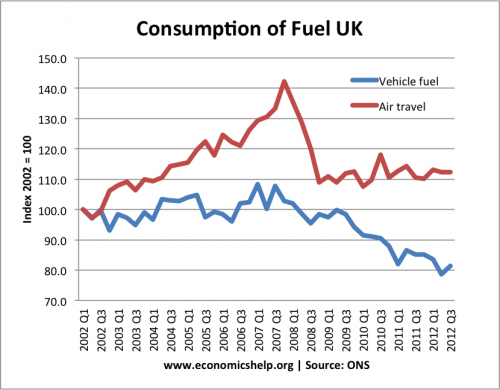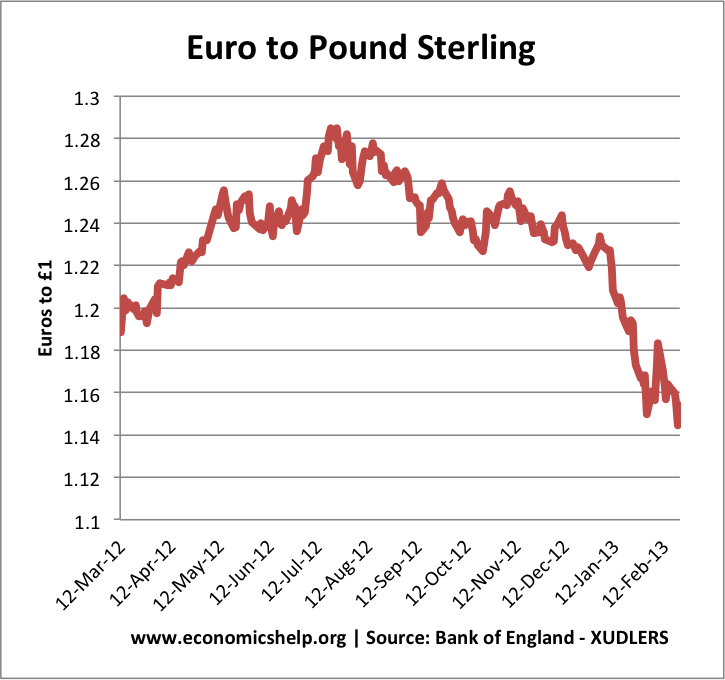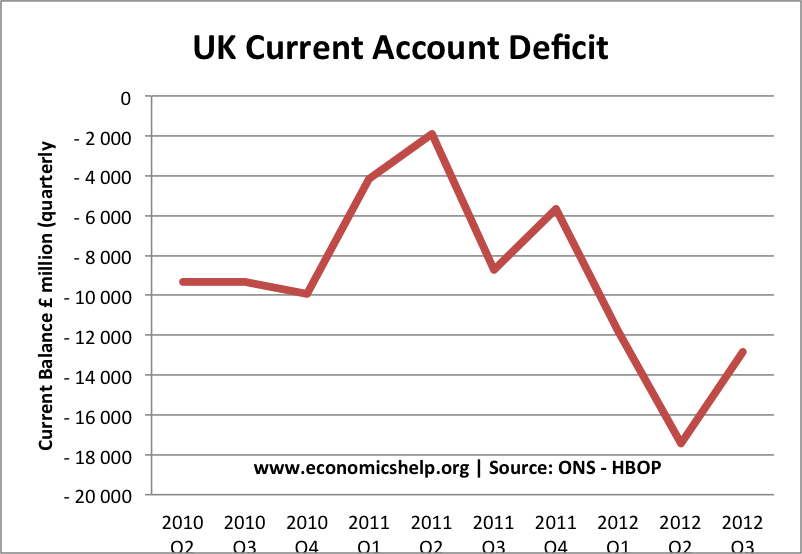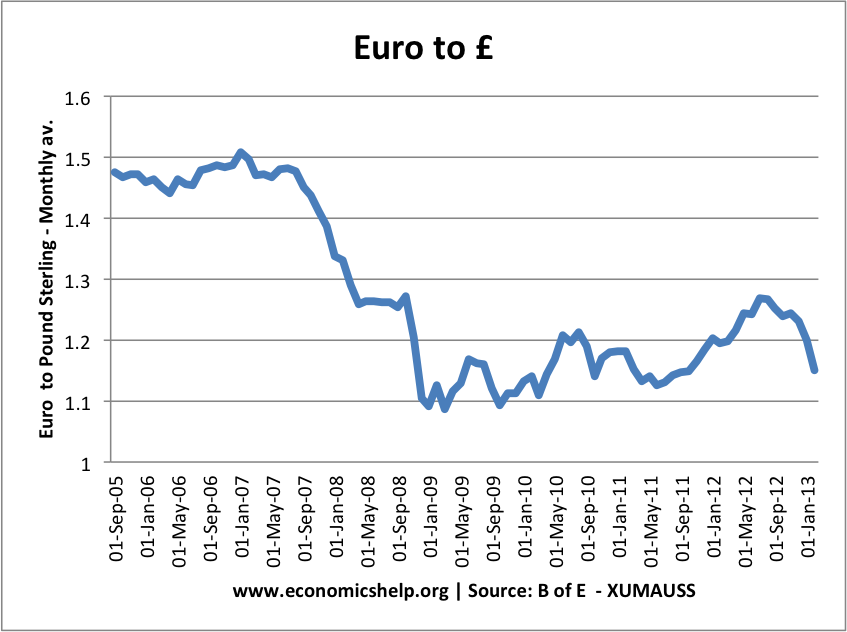In the post-war period, consumption of vehicle fuel (petrol / diesel) increased dramatically as car ownership rose and more journeys were made by car. However, since 2007, there has been a significant drop in vehicle fuel consumption, with demand falling over 20%
Many factors affect demand for vehicle fuel, including price, income, fuel efficiency, quality of alternatives (public transport) and general preferences.

If we ignore all the income effects, social effects and changes in consumer preferences (which admittedly is very significant) we can make a very rough estimate at the price elasticity of demand for vehicle fuel.
Between Q3 2002 and Q3 2012 households consumption of vehicle fuel fell by 18% per head. During this period the annual per litre price of petrol increased 85% and diesel 88%. Department of Energy and Climate Change
This gives a (very rough) PED for petrol of (-18/85) = – 0.21
It is what we would expect – demand for vehicle fuel is price inelastic, but higher prices do reduce demand somewhat.
Factors affecting demand for fuel
Cost of Fuel
Due to rising costs of fuel, households are still spending more on fuel. In 2002, we spent £89 per head on fuel. In 2012, this had increased to £129. Given the rise in the fuel burden, it is not surprising people have sought to reduce consumption. (see: fuel poverty)
Income effects
The graph shows that air fuel is much more sensitive to income effects. During the start of the recession from 2007 to 2009, demand for airline fell almost 30% in a short space of time. This indicates that airline fuel is income elastic – sensitive to changes in income. Airline fuel has not really recovered from 2009. The recession will also be having an impact on demand for petrol. The biggest decline for vehicle fuel has occurred during this period. Faced with rising prices and squeezed real wages, people have been cutting back on vehicle fuel. When the economy recovers, we can expect a renewed increase in demand for vehicle fuel.



